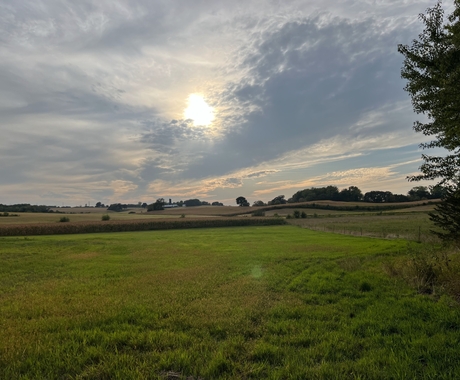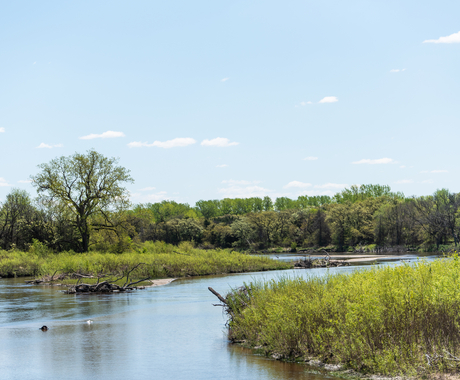Rhea Landholm, brand marketing and communications manager, rheal@cfra.org or 402.687.2100 ext. 1025
Lyons, Nebraska - Several organizations from across the Midwest and Great Plains partnered this week to urge people in their states to take action to address climate change and call for investments in renewable energy, energy efficiency and limiting carbon pollution from America’s power plants.
The Center for Rural Affairs, Clean Up the River Environment, Iowa Interfaith Power and Light, Clean Wisconsin and the Environmental Law and Policy Center worked together with farmers, ranchers and small town residents this week to build awareness about climate change and highlight efforts to reduce the impact and severity of climate change - efforts that include the Clean Power Plan proposed by the Environmental Protection Agency (EPA).
"Take a drive across the Midwest on the interstate and you’re likely to see wind turbines dotting the landscape,” said Lauren Kolojejchick-Kotch, Energy and Climate Fellow at the Center for Rural Affairs. "This week, we’re turning off the interstate and traveling down gravel roads and small town Main Streets, showcasing farmers, ranchers and rural people who invested in renewable energy projects."
The Rural Climate and Energy Tour - hosted by the Center for Rural Affairs and their partner organizations - features rural people from Nebraska to Wisconsin who are doing their part to address climate change, while saving big on their utility bills.
“Rural and small town Midwesterners are taking action to address the impacts of climate change and investing in energy efficiency and renewable energy. To better document these efforts, we are highlighting wind projects, solar arrays, energy efficiency and climate concerns with a virtual climate and renewable energy tour,” said Kolojejchick-Kotch.
The virtual tour showcases efforts by people like Nancy and Alan Meyer of North Bend, Nebraska, who dramatically reduced their energy bills by installing geothermal and solar technology at their 3,000 square foot farm house built in 1904. In fact, their electric bills this summer were under $90.
Marvin Boike, an organic grain farmer near Gluek, Minnesota recognized the opportunity abundant wind provided on his 600 acre farm and built a wind turbine with help from a Renewable Energy for America Program grant provided by USDA Rural Development. Boike reports that the turbine has been performing well and lowering his utility bill since its recent installation.
The Farmers Electric Cooperative, the oldest rural electric cooperative in Iowa, has proved itself a leader in renewable energy development by building a 800 kW solar farm near Kalona, and providing incentives for customers who invest in renewable energy on their own farms, ranches or homes. These initiatives fit into the co-op's goal of generating 15 percent of its entire power output using renewable energy by 2025.
Farmers are also noticing the challenge that erratic weather presents on their own farm. Greg and Kathy Kosmeder, beginning farmers near Colgate, Wisconsin say drought, early snow and cold snaps have negatively impacted their crop production.
“Action on climate change is necessary for the future of our rural communities, farms, ranches and for beginning farmers and ranchers to succeed,” added Kolojejchick-Kotch. “That’s why the Center for Rural Affairs and our partner organizations are working closely with farmers, ranchers and small town folks to build awareness about climate change and the Clean Power Plan proposed by the Environmental Protection Agency (EPA).”




